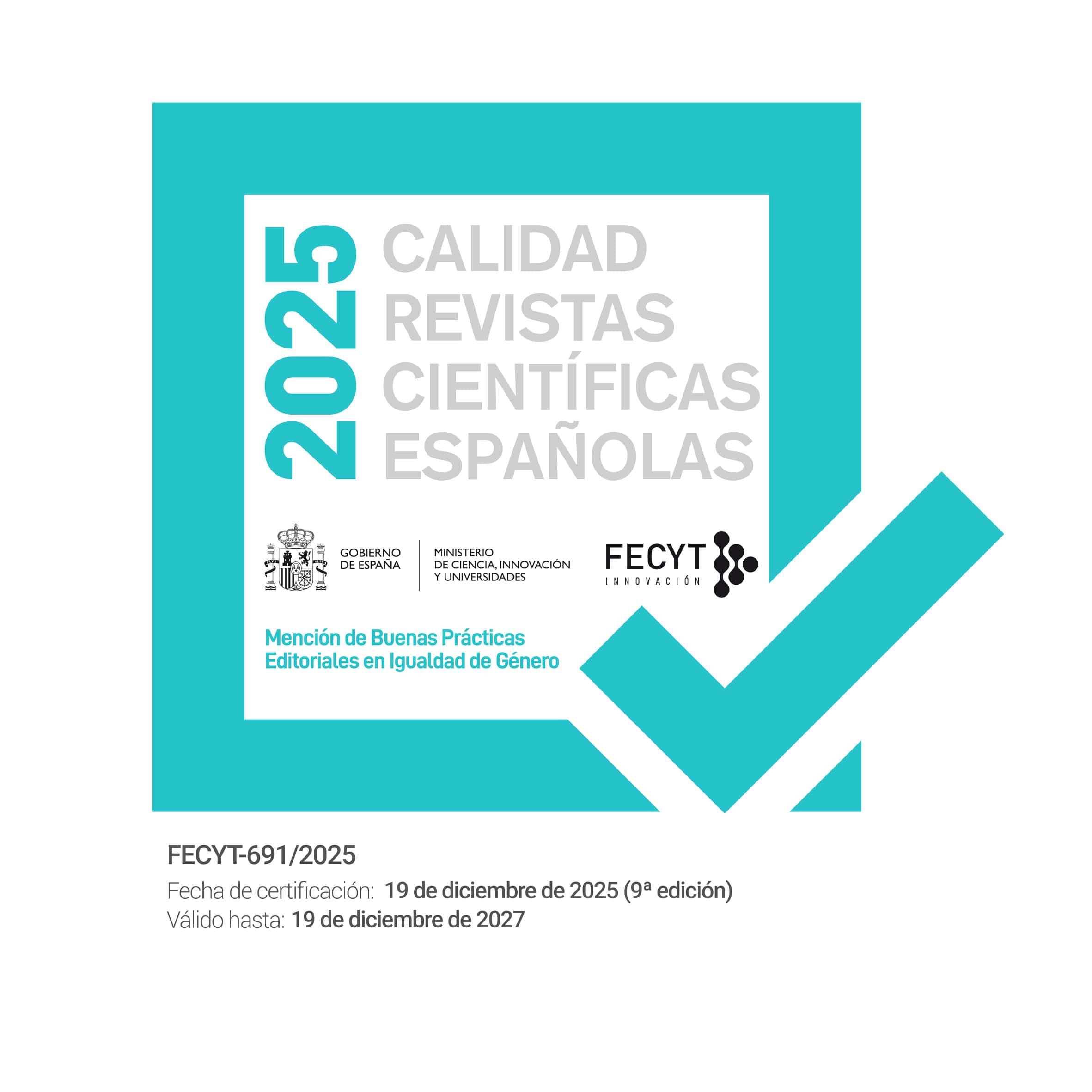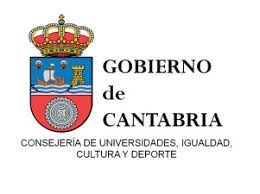Pepitorias y revoltillos cervantinos: las Novelas ejemplares (1613) en All for the Better (1703) de Francis Manning
DOI:
https://doi.org/10.55422/bbmp.918Palabras clave:
Francis Manning, All for the Better, Miguel de Cervantes, Novelas EjemplaresResumen
El presente artículo rescata para el cervantismo All for the Better or The Infallible Cure: A Comedy (London, B. Bragg, 1703) del poeta, ensayista y dramaturgo inglés Francis Manning. El rapto y la violación de Isabella a manos de Alphonso, inspirados en la pareja que forman Leocadia y Rodolfo en La fuerza de la sangre (Novelas ejemplares, Madrid, Juan de la Cuesta, 1613), se imbrican con otras cuatro subtramas deudoras de La ilustre fregona (si el dueño de la posada del Sevillano le ofrecía sus contactos a Avendaño a la hora de liberar a Carriazo, preso por haber herido a un aguador de Toledo, Elvira recurrirá aquí a López como avalista de la fianza de Woodvil), La gitanilla (Woodvil y Johnson viajan juntos a España y el primero dará con sus huesos en la cárcel tras la falsa acusación de una mujer), El celoso extremeño (el episodio del viejo López, marido de la joven Henrietta) y El casamiento engañoso (los amigos protagonistas de la obra de Manning beberán los vientos por sendas misteriosas damas que procuran estafarlos).
Descargas
Publication Facts
Reviewer profiles N/D
Author statements
Indexado: {$indexList}
- Academic society
- Sociedad Menéndez Pelayo
- Editora:
- Sociedad Menéndez Pelayo
Estadísticas globales ℹ️
|
466
Visualizaciones
|
411
Descargas
|
|
877
Total
|
|
Citas
ARGELLI, Annalisa. (2001). «Una Novela ejemplar al teatro: hacia un estudio de las adaptaciones teatrales inglesas de Cervantes». Hispanófila. 133. 53-68.
BERTONI, Clotilde. (1997). Percorsi europei dell’eroicomico. Pisa. Nistri/Lischi Edi¬tori.
BEVIS, Richard W., (1988). English Drama: Restoration and Eighteenth Century 1660-1789. London / New York. Longman.
BIHN, N. T. y Christian Viviani, (2005). El cine de Lubitsch. Karin Wasner (trad.). Madrid. T&B Editores.
BRAGA RIERA, Jorge, (2009). Classical Spanish Drama in Restoration England (1660-1700). Amsterdam / Philadelphia. John Benjamins Publishing Company. DOI: https://doi.org/10.1075/btl.85
BURLING, William J., (1992). A Checklist of New Plays and Entertainments on the London Stage, 1700-1737. New Jersey. Fairleigh Dickinson University Press.
CASALDUERO, Joaquín, (1974). Sentido y forma de las «Novelas ejemplares». Madrid. Gredos.
CASTILLO SOLÓRZANO, Alonso, (1985). Las harpías en Madrid. Pablo Jauralde Pou (ed.). Madrid. Castalia.
CERVANTES, Miguel de, (1686). The Spanish Decameron: Or Ten Novels. Roger L’Estrange (trad.). London. Simon Neale.
CERVANTES, Miguel de, (1981). Novelas ejemplares II. Harry Sieber (ed.). Madrid. Cátedra.
CERVANTES, Miguel de, (1982). Novelas ejemplares II. Juan Bautista Avalle-Arce (ed.). Madrid. Castalia.
CERVANTES, Miguel de, (1997). El celoso extremeño. Florencio Sevilla Arroyo y Antonio Rey Hazas (eds.). Madrid. Alianza Editorial/Centro de Estudios Cervantinos.
CERVANTES, Miguel de, (2013). Novelas ejemplares. Jorge García López (ed.). Madrid. Real Academia Española.
CISNEROS ARAUJO, María Eugenia. (2011). «La naturaleza humana en Hobbes: antropología, epistemología e individuo». Andamios. 8. 16. DOI: https://doi.org/10.29092/uacm.v8i16.472
https://www.scielo.org.mx/scielo.php?script=sci_arttext&pid=S1870-00632011000200013.
CLAMURRO, William H. (1998) «Eros e identidad en las Novelas ejemplares de Cervantes». Actas del IV Congreso Internacional de la Asociación Internacional Siglo de Oro (AISO) (Alcalá de Henares, 22-27 de julio de 1996). María Cruz García de Enterría, Alicia Cordón Mesa (eds.). Alcalá. Universidad de Alcalá. 433-440.
CLOSE, Anthony J., (2000). Cervantes and the Cominc Mind of his Age. Oxford. Oxford University Press. DOI: https://doi.org/10.1093/acprof:oso/9780198159988.001.0001
CLOSE, Anthony J. (2005). «La comicidad del primer Quijote y la aventura de los galeotes». Boletín de la Biblioteca de Menéndez Pelayo. 81. 81-105. DOI: https://doi.org/10.55422/bbmp.14
CORMAN, Brian. (2000) «Comedy». The Cambridge Companion to English Restoration Theatre. Deborah Payne Fisk (ed.). Cambridge. Cambridge University Press. 52-69. DOI: https://doi.org/10.1017/CCOL0521582156.004
COWAN, Philip A. y E. Mavis Hetherington (eds.), (1991). Family Transitions. New York. Routledge.
DARBY, Trudi L. y Alexander Samson. (2020) «Cervantes on the Jacobean Stage». The Cervantean Heritage. Reception and Influence of Cervantes in Britain. Juan Antonio Garrido Ardila (ed.). London. Legenda 206-222.
EL SAFFAR, Ruth S., (1974). Novel to Romance: A Study of Cervantes’s «Novelas ejemplares». Baltimore/London. The Johns Hopkins University Press.
ESCUDERO BAZTÁN, Juan Manuel. (2013). «Reescrituras dramáticas áureas de La fuerza de la sangre de Cervantes». Anales Cervantinos. 45. 155-174. DOI: https://doi.org/10.3989/anacervantinos.2013.007
ESCUDERO BAZTÁN, Juan Manuel. (2020). «La fuerza de la sangre de Cervantes y su reescritura dramática en Alexandre Hardy». Hipogrifo. 8. 2. 255-269. DOI: https://doi.org/10.13035/H.2020.08.02.17
ESOPO, (1985). Fábulas de Esopo. Vida de Esopo. Fábulas de Babrio. Pedro Bádenas de la Peña y Javier López Facal (trads.). Madrid. Gredos.
FARQUHAR, George, (2021). Love and Business. The Ex-Classics Web Site.
https://www.exclassics.com/landb/landb.txt.
FERNÁNDEZ MOSQUERA, Santiago, (2005). Quevedo: reescritura e intertextualidad. Madrid. Biblioteca Nueva.
FRIEDLAND, Louis Sigmund. (1911). «The Dramatic Unities in England». The Journal of English and Germanic Philology. 10. 1. 56-98.
FORCIONE, Alban K., (1982). Cervantes and the Humanist Vision. A Study of Four «Exemplary Novels». Nueva Jersey. Princeton University Press. DOI: https://doi.org/10.1515/9781400886050
GARRIDO ARDILA, Juan Antonio. (2006). «Cervantes en Inglaterra. El Quijote en los albores de la novela británica». Bulletin of Hispanic Studies. 83. 5. 7-156.
GARRIDO ARDILA, Juan Antonio. (2020) «Henry Fielding: From Quixotic Satire to the Cervantean Novel». The Cervantean Heritage. Reception and Influence of Cervantes in Britain. Juan Antonio Garrido Ardila (ed.). London. Legenda. 124-141.
GENETTE, Gérard, (1989). Palimpsestos. La literature en Segundo grado. Celia Fernández Prieto (trad.). Madrid. Taurus.
GILL, Pat. (2000) «Gender, Sexuality, and Marriage». The Cambridge Companion to English Restoration Theatre. Deborah Payne Fisk (ed.). Cambridge. Cambridge University Press. 191-208. DOI: https://doi.org/10.1017/CCOL0521582156.012
GIORGI, Arianna. (2019) «Petimetre y majo, afrancesado y castizo: nuevas identidades indumentarias en el Madrid borbónico». Procesos de civilización: culturas de élites, culturas populares. Una historia de contrastes y tensiones (siglos XVI-XIX). José María Imízcoz Beunza, Máximo García Fernández y Javier Esteban Ochoa de Eribe (coords.). [Bilbao]. Universidad del País Vasco. 51-72.
GIORGI, Arianna. (2020) «El triunfo de la individualidad: el petimetre y el dandi en la España del siglo XVIII Y XIX». Familias, experiencias de cambio y movilidad social en España siglos xvi-xix). Francisco García González y Francisco Chacón Jiménez (eds.). Cuenca. Universidad de Castilla La Mancha, 245-256. DOI: https://doi.org/10.18239/congresos_2020.23.15
GONZÁLEZ RAMÍREZ, David, (2011). Del taller de imprenta al texto crítico: recepción y edición de la «Guía y avisos de forasteros» de Liñán y Verdugo. Málaga. Universidad de Málaga.
GOSSETT, Suzanne. (1984). ««Best Men are Molded out by Faults»: Marrying the Rapist in Jacobean Drama». English Literary Renaissance. 14. 3. 305-327. DOI: https://doi.org/10.1111/j.1475-6757.1984.tb00868.x
GREEN, Otis H. (1959). ««Se acicalaron los auditorios»: An Aspect of the Spanish Literary Baroque». Hispanic Review. 27. 413-422. DOI: https://doi.org/10.2307/470556
HAMMOND, Brean. (2020) «The Cervantic Legacy in the Eighteenth-Century Novel». The Cervantean Heritage. Reception and Influence of Cervantes in Britain. Juan Antonio Garrido Ardila (ed.). London. Legenda. 96-103.
HAYES, Julie Candler. (2020) «Eighteenth-Century English Translations of Don Quixote». The Cervantean Heritage. Reception and Influence of Cervantes in Britain. Juan Antonio Garrido Ardila (ed.). London. Legenda. 66-75.
HERMANN, Frédéric. (2015). «The Glorious Revolution (1688-1701) and the Return of Whig History». Études Anglaises. 68. 3. 331-344. DOI: https://doi.org/10.3917/etan.683.0331
HONTANILLA, Ana. (2008). «Images of Barbaric Spain in Eighteenth-Century British Travel Writing». Studies in Eighteenth-Century Culture. 37. 1. 119-143. DOI: https://doi.org/10.1353/sec.0.0029
HUGHES, Derek. (2005). «Rape on the Restoration Stage». The Eighteenth Century. 46. 3. 225-236.
IFE, B. W. y Trudi L. Darby. (2005) «Remorse, Retribution and Redemption in La fuerza de la sangre: Spanish and English Perspectives». A Companion to Cervantes’s «Novelas ejemplares». London. Tamesis. 172-190. DOI: https://doi.org/10.1017/9781846153853.010
KING, Rebecca Frances, (1998). Rape in England 1600-1800: Trials, Narratives and the Question of Consent [tesina]. Durham E-Theses Online. Durhman University.
http://etheses.dur.ac.uk/4844/.
LANGHANS, Edward A. (2000) «The Theatre». The Cambridge Companion to English Restoration Theatre. Deborah Payne Fisk (ed.). Cambridge. Cambridge University Press. 1-18. DOI: https://doi.org/10.1017/CCOL0521582156.001
LANOT, Jean-Raymond y Marc Vitse. (1976). «Éléments pour une théorie du figuron». Caravelle. Cahiers du monde Hispanique et Luso-Brésilien. 27. 189-212. DOI: https://doi.org/10.3406/carav.1976.2062
LOVE, Harold. (2005) «Restoration and early eighteenth-century drama». The Cambridge History of English Literature, 1660-1780. John Richetti (ed.). Cambridge: Cambridge University Press. 107-131. DOI: https://doi.org/10.1017/CHOL9780521781442.007
LUTTIKHUIZEN, Frances. (2020) «Englishing Cervantes’s Exemplary Novels». The Cervantean Heritage: Reception and Influence of Cervantes in Britain. Juan Antonio Garrido Ardila (ed.). London. Legenda. 84-94.
MACKIE, Erin. (2005). «Boys Will Be Boys: Masculinity, Criminality, and the Restoration Rake». The Eighteenth Century, 46. 2. 129-149.
MAESTRO, Jesús G., (2007). Las ascuas del Imperio. Crítica de las «Novelas ejemplares» de Cervantes desde el materialismo filosófico. Vigo. Editorial Academia del Hispanismo.
MANNING, Francis, (1700). The Generous Choice. A Comedy. London. R. Wellington y A. Bettesworth. EEBO-TCP (Early English Books-Text Creation Partnership).
https://quod.lib.umich.edu/e/eebo2/A51805.0001.001?rgn=main;view=fulltext.
MANNING, Francis, (1703). All for the Better: or, The Infallible Cure. A Comedy. London. B. Bragg. ProQuest.com.
MARAVALL, José Antonio, (1975). La cultura del Barroco: análisis de una estructura histórica. Barcelona. Ariel.
https://www.proquest.com/books/all-better-1703/docview/2138575651/se-2?accountid=14520.
MARTÍNEZ MATA, Emilio. (2015) «Las Novelas ejemplares en la estela interpretativa del Quijote». Cervantes creador y Cervantes recreado. Emmanuel Marigno, Carlos Mata Induráin y Hurgo Hernán Ramírez Sierra (eds.). Navarra. BIADIG (Biblioteca Áurea Digital del GRISO). 185-191.
MAYBANK, Diane. (2018) «An Introduction to Restoration Comedy». British Library. Discovering Literature: Restoration and 18th Century.
MAYO, Arantza y Juan Antonio Garrido Ardila. (2020) «The English Translations of Cervantes’s Works across the Centuries». The Cervantean Heritage. Reception and Influence of Cervantes in Britain. Juan Antonio Garrido Ardila (ed.). London. Legenda. 54-60.
MCMURRAY, Joan Farabow, (1987). John Fletcher and his sources in Cervantes (tesis doctoral). New York. The University of Rochester.
MEHL, Dieter. (1965). «Forms and Functions of the Play within a Play». Renaissance Drama. 8. 41-61. DOI: https://doi.org/10.1086/rd.8.41913891
MIDDLETON, Thomas, (2010). Thomas Middleton: The Collected Works. Gary Taylor y John Lavagnino (eds.). Oxford. Oxford University Press. DOI: https://doi.org/10.1093/oseo/instance.00012279
MOLHO, Maurice. (1990). «Aproximación al Celoso extremeño». Nueva Revista de Filología Hispánica. 38. 2. 743-792. DOI: https://doi.org/10.24201/nrfh.v38i2.812
MUNNS, Jessica. (2004) «Theatrical Culture I: Politics and Theatre». The Cambridge Companion to English Literature, 1650-1740. Steven N. Zwicker (ed.). Cambridge. Cambridge University Press. 82-103. DOI: https://doi.org/10.1017/CCOL0521563798.004
NICOL, David. (2006). ««My Little what shall I call thee»: Reinventing the Rape Tragedy in William Rowley’s All’s Lost by Lust». Medieval & Renaissance Drama in England. 19. 175-193.
PARDO GARCÍA, Pedro Javier. (1995-1997). «Formas de imitación del Quijote en la novela inglesa del siglo XVIII: Joseph Andrews y Tristram Shandy». Anales Cervantinos. 33. 133-164. DOI: https://doi.org/10.3989/anacervantinos.1997.306
PARDO GARCÍA, Pedro Javier. (1996). «Novel, Romance and Quixotism in Richardson’s Pamela». Atlantis: Revista de la Asociación Española de Estudios Anglo-Norteamericanos. 18, 1-2. 306-336.
PÉREZ MAGALLÓN, Jesús, (2015). Cervantes, monumento de la nación: problemas de identidad y cultura. Madrid. Cátedra.
PÉREZ-PRENDES, José Manuel y Joaquín Azcárraga. (1989). Lecciones de historia del Derecho español. Madrid. Centro de Estudios Ramón Areces.
PONCE CÁRDENAS, Jesús, (2010). El tapiz narrativo del «Polifemo»: eros y elipsis. Barcelona. Universitat Pompeu Fabra.
RABELL, Carmen R., (2022). Cuerpo y cabeza en el «Teatro popular» de Francisco de Lugo y Dávila. Madrid. Sial.
RODRÍGUEZ-LUIS, Julio. (1998) «Una pícara cervantina». Actas del Tercer Congreso Internacional de la Asociación de Cervantistas. Antonio Pablo Bernat Vistarini (coord.). Universidad de las Islas Baleares/Servei de Publicacions i Intercanvi Científic 481-487
ROMERO DÍAZ, Nieves, (2002). Nueva nobleza, nueva novela: reescribiendo la cultura urbana del Barroco. Newark (Delaware). Juan de la Cuesta.
ROYLE, Trevor, (2004). The British Civil War: The Wars of the Three Kingdoms (1638-1660). New York/Basingstoke (England).
SÁENZ-RICO URBINA, Alfredo. (1982). «Las controversias sobre el teatro en la España del siglo XVII. La polémica acerca de la licitud de las comedias, especialmente en Barcelona y en Mallorca durante el último cuarto del siglo XVII». Pedralbes: Revista d’historia moderna. 2. 69-100.
SÁEZ, Adrián J. (2013). «Reescritura e intertextualidad en Calderón: No hay cosa como callar». Criticón. 117. 159-176. DOI: https://doi.org/10.4000/criticon.237
https://journals.openedition.org/criticon/237.
SÁEZ, Adrián J. (2018). «Vidas imaginarias: formas y modelos de las relaciones de soldados del Siglo de Oro». Studi Ispanici. 43. 171-182.
SAMSON, Alexander. (2015). «Maybe Exemplary? James Mabbe’s Translation of the Exemplarie Novells (1640)». Republic of Letters. 4. 2. 1-16.
SAMSON, Alexander. (2020) «‘Last thought upon a windmill’?: Cevantes and Fletcher». The Cervantean Heritage. Reception and Influence of Cervantes in Britain. Juan Antonio Garrido Ardila (ed.). London. Legenda. 223-233.
SEIDEL, Michael. (2004) «Satire, Lampoon, Libel, Slander». The Cambridge Companion to English Literature, 1650-1740. Steven N. Zwicker (ed.). Cambridge. Cambridge University Press. 33-57. DOI: https://doi.org/10.1017/CCOL0521563798.002
SOLOMON, Noël, (1982). La vida rural castellana en tiempos de Felipe II. Barcelona. Ariel.
SOUILLER, Didier. (1981). «Utilisation et transformation par Defoe dans Moll Flanders du Marriage Trompeur de Cervantes». Revue de Littérature Comparée. 271. 1. 30-38.
TAGUE, Ingrid H. (2001). «Love, Honor, and Obedience: Fashionable Women and the Discourse of Marriage in the Early Eighteenth Century». Journal of British Studies. 40. 76-106. DOI: https://doi.org/10.1086/386235
TAYLOR, Stephen. (1998) «Robert Walpole, First Earl of Orford». Biographical Dictionary of British Prime Ministers. Robert Eccleshall y Graham Walker (eds.). London. Routledge. 1-13. DOI: https://doi.org/10.4324/9780203194553-1
TEMPLE, William, (1705). Miscellanea. The Second Part. In Four Essays. I. Upon Antient And Modern Learning. … IV. Upon Poetry. London. Ri. Simpson y Ra. Simpson.
VAIOPOULOS, Katerina, (2010). De la novella a la comedia: las «Novelas ejemplares» de Cervantes en el teatro del Siglo de Oro. Vigo. Editorial Academia del Hispanismo.
WALKER, Garthine. (2013a). «Everyman or a Monster? The Rapist in Early Modern England, c. 1600-1750». History Workshop Journal. 76. 5-31. DOI: https://doi.org/10.1093/hwj/dbs051
WALKER, Garthine. (2013b). «Rape, Acquittal and Culpability in Popular Crime Reports in England, c. 1670-c. 1750». Past and Present. 220. 115-142. DOI: https://doi.org/10.1093/pastj/gts063
WINN, James A. (2004) «Theatrical Culture II: Theatre and Music». The Cambridge Companion to English Literature, 1650-1740. Steven N. Zwicker (ed.). Cambridge. Cambridge University Press. 104-119. DOI: https://doi.org/10.1017/CCOL0521563798.005
WOOLRYCH, Austin, (2002). Britain in Revolution. Oxford. Oxford University Press. DOI: https://doi.org/10.1093/oso/9780198200819.001.0001
YUDIN, Florence L. (1968). «The «Novela corta» as «Comedia»: Lope’s Las Fortunas de Diana». 45. 3. 181-188. DOI: https://doi.org/10.1080/1475382682000345181
ZIMIC, Stanislav, (1996). Las «Novelas ejemplares» de Cervantes. Madrid. Siglo XXI de España Editores, S. A.
Descargas
Publicado
Cómo citar
Número
Sección
Licencia
Derechos de autor 2023 Rafael Bonilla Cerezo

Esta obra está bajo una licencia internacional Creative Commons Atribución-NoComercial 4.0.








